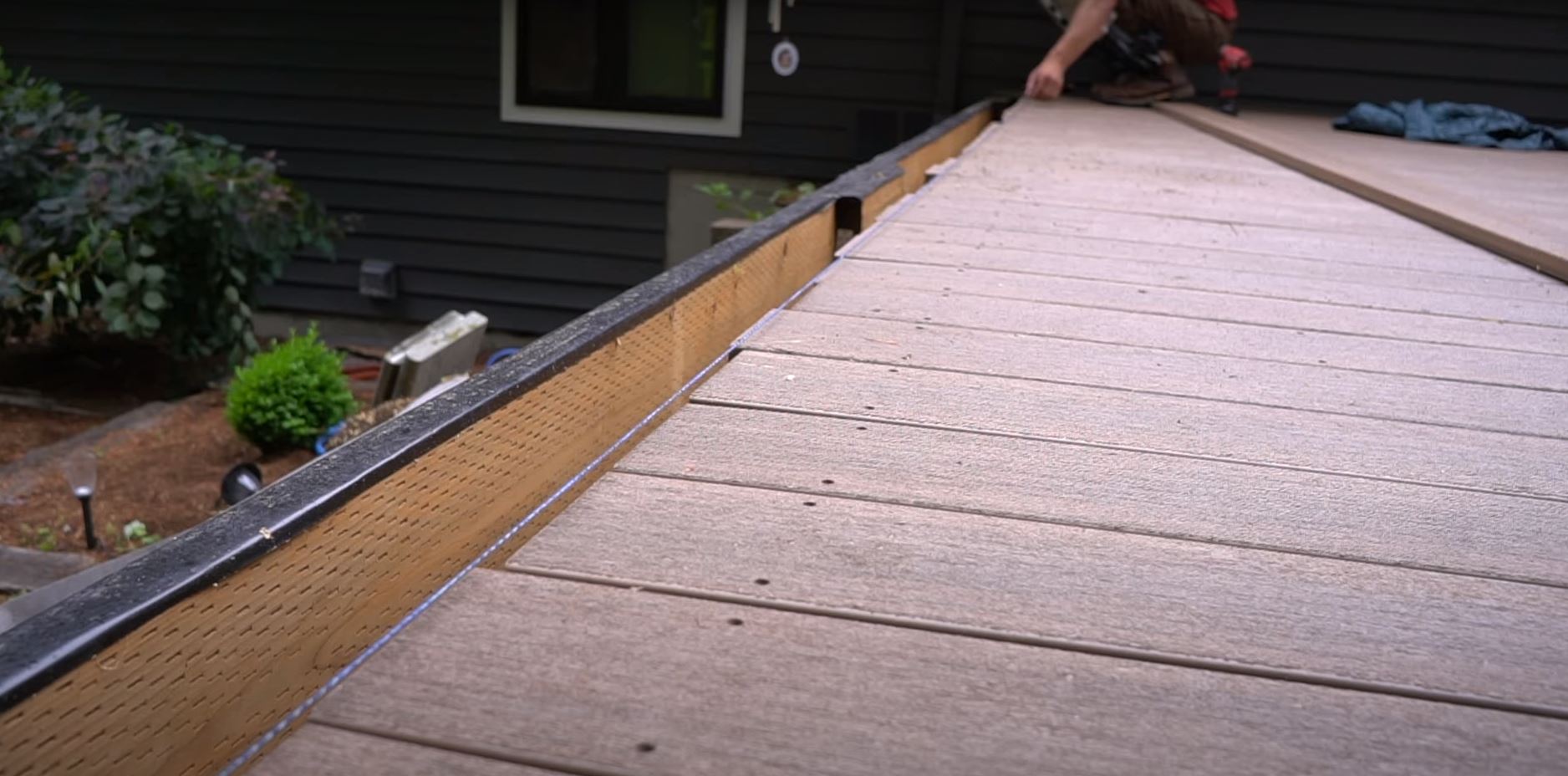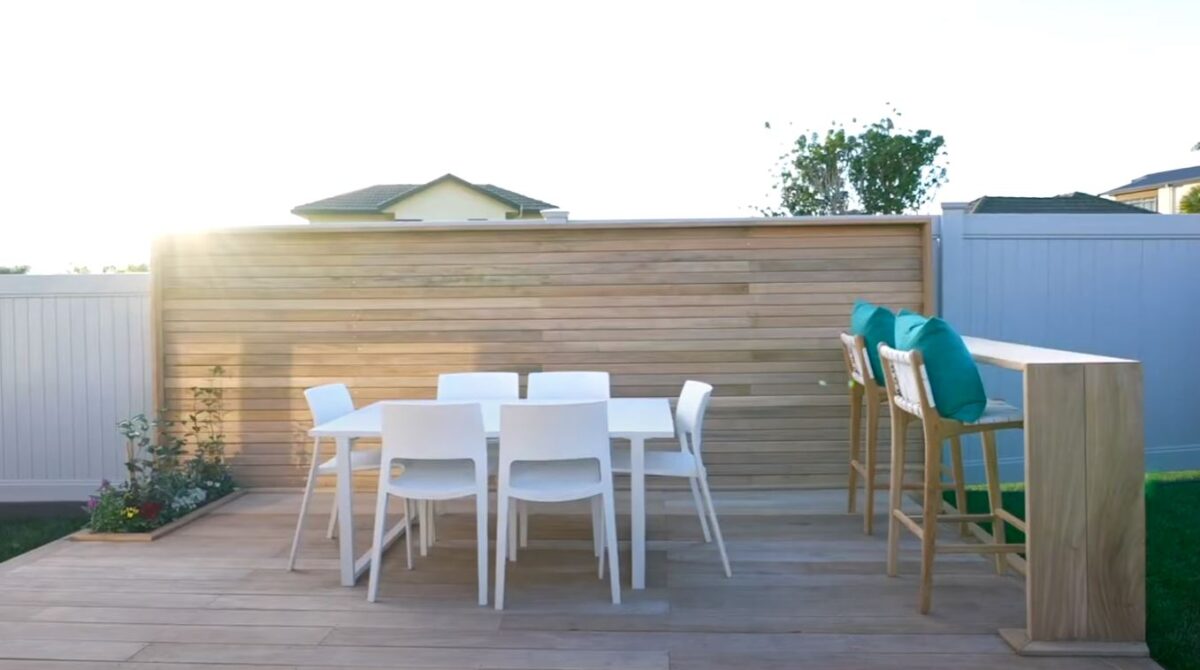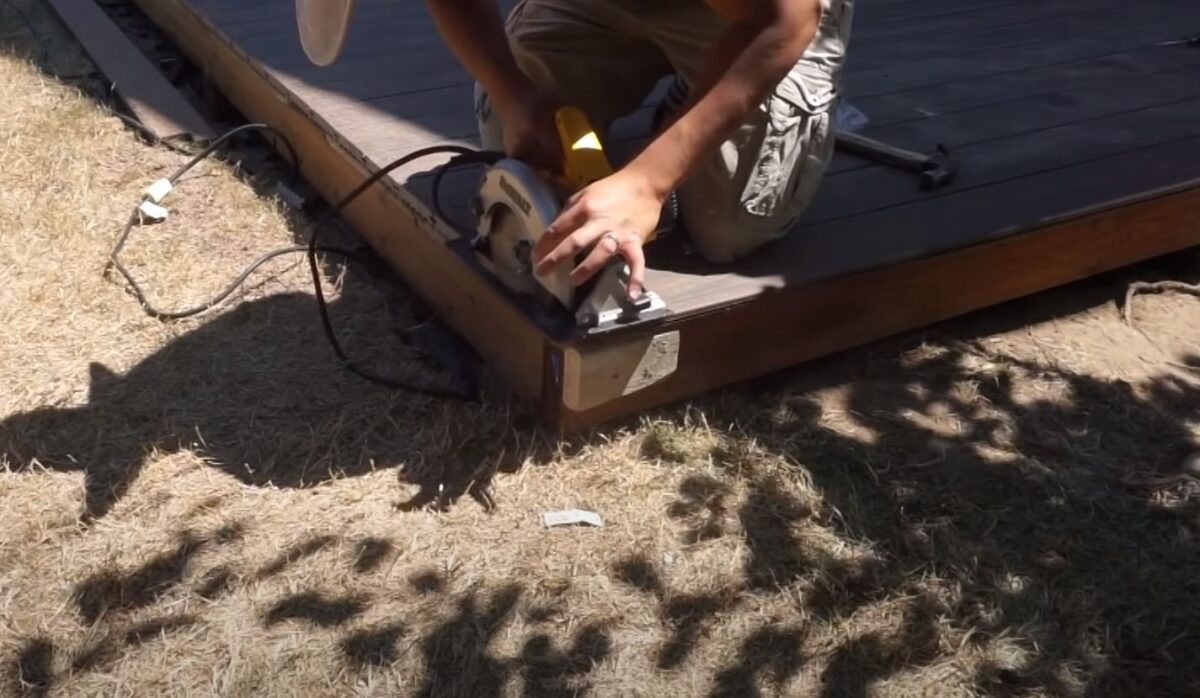Understanding Timber’s Vulnerability
From the sunny stretches of Takapuna to the suburban serenity of Henderson, Auckland’s homes often sport beautiful timber decks. However, it’s vital to weigh the pros and cons before committing to a wooden deck. Timber, while exuding warmth and natural charm, also comes with its set of disadvantages.
Maintenance Commitment
Timber decks require regular upkeep:
- Re-sealing: To protect against moisture and premature wear.
- Re-staining or painting: Ensuring it maintains its lustre amidst Auckland’s varying weather conditions.
- Regular cleaning: To prevent mould, mildew, and algae, especially in areas like Takapuna where sea-spray can increase moisture levels.
Vulnerability to Weather
Auckland’s weather, with its bouts of heavy rain and strong sun, can be harsh on timber:
- UV Damage: Constant sun exposure can fade the wood’s colour.
- Moisture Damage: Rain or coastal moisture, especially in regions like Takapuna, can cause warping or swelling.
- Decay: Over time, untreated or poorly maintained timber can rot.
Susceptibility to Pests:
Decking is an Auckland favourite, with countless homes in suburbs like Ponsonby and Remuera boasting beautiful timber patios and balconies. Yet, one recurring concern is the susceptibility of some timbers to pests, a matter that can affect not only the lifespan of the deck but also its safety and aesthetics.
Common Pests that Target Timber Decks:
- Termites: Often referred to as the ‘silent destroyer’, termites can cause extensive damage to untreated wood without obvious signs until it’s too late. Their colonies can thrive under decks, munching away at the wood and weakening its structure.
- Wood Borers: These pests drill holes into timber, often leaving a powder-like residue. Over time, the multiple tunnels they create can significantly weaken the structure of the deck.
- Fungi and Mold: While not pests in the traditional sense, fungi and mold can deteriorate timber, especially in humid conditions like those Auckland often experiences in its more coastal suburbs.
Prevention is Better than Cure:
- Regular Inspection: Periodically checking your deck for signs of infestation or damage is the first step. Look out for hollow-sounding timber, visible tunnels, or the presence of fine sawdust-like material.
- Choose Resistant Timber: Some timbers, like Kwila, are naturally more resistant to pests. Others, like pine, are often treated to enhance their resistance. However, it’s essential to ensure that the treatment doesn’t involve harmful chemicals, especially if the deck is a place where you entertain or where children play.
- Maintain Your Deck: Regular maintenance, including cleaning and applying protective finishes, can deter pests. A well-maintained deck not only looks great but is also less inviting to pests.
- Professional Treatment: If you’re concerned about potential infestations, consider seeking professional pest treatments designed for timber decks. These treatments can offer long-term protection against a variety of pests.
For homeowners in Auckland, understanding the risks associated with pests and timber decking is essential. By staying vigilant, choosing the right materials, and opting for regular maintenance, you can enjoy your deck for years without the worry of unwanted invaders compromising its integrity. Should you need assistance or guidance, consulting with a reputable local service, like Quality Fencing Auckland, is a prudent step to ensure your deck remains pest-free.
Environmental Concerns Associated with Timber Decking
In the evergreen suburbs of Mt. Eden and Grey Lynn, residents pride themselves on their environmental consciousness. When constructing timber decks in Auckland, it’s essential to be aware of the environmental impacts and ensure that choices made are sustainable and eco-friendly.
Deforestation and Its Impact:
- Loss of Biodiversity: Extracting timber often involves clearing large sections of forests, which results in habitat destruction. This impacts both flora and fauna, leading to the potential extinction of certain species.
- Climate Change: Trees are natural carbon sinks, absorbing more carbon dioxide than they release. When they are cut down, especially at a rate faster than they’re replanted, more carbon is released into the atmosphere, contributing to global warming.
- Soil Erosion: Trees and forests hold soil together. Once they’re removed, the soil can erode, which affects the quality of land and can result in sedimentation in waterways.
Timber Sourcing and Sustainability:
- Certified Timber: Whenever possible, opt for timber that has been certified by recognised organisations like the Forest Stewardship Council (FSC). This ensures that the wood is sourced from responsibly managed forests.
- Reclaimed Wood: Another eco-friendly option is to use reclaimed or recycled wood. Not only does this prevent new trees from being cut down, but it also reduces the energy and resources spent on processing new timber.
- Local Timber: Transporting timber from distant locations or overseas contributes to a larger carbon footprint. Using locally-sourced timber is a greener choice as it reduces transportation emissions.
Chemical Concerns:
- Treatments and Finishes: Many timbers are treated with chemicals to enhance their longevity and resistance to pests. However, some of these chemicals can be harmful to the environment, leaching into the soil or evaporating into the atmosphere. Opt for treatments that are low in volatile organic compounds (VOCs) and are labelled as environmentally-friendly.
- Maintenance Products: When maintaining and cleaning your deck, choose products that are biodegradable and non-toxic. This ensures that any runoff from your deck won’t harm the surrounding environment or make its way into Auckland’s waterways.
Building a deck is more than just enhancing a home’s aesthetic appeal; it’s a commitment to the environment. By understanding the implications of timber sourcing and the choices available, Aucklanders can ensure that their beautiful decks also support a sustainable and eco-friendly future. For guidance on sustainable decking options, it’s recommended to connect with Auckland deck installation professionals like Quality Fencing Auckland, who prioritise both quality and environmental consciousness.
Cost Implications
While timber might seem cost-effective initially, long-term maintenance costs in Auckland can add up:
- Regular treatments: Can become a recurring expense.
- Replacement costs: Damaged or rotten boards might need replacement sooner than other materials.
Safety Aspects in Timber Decking
- Slip hazards: Timber can become slippery when wet, a common concern in Auckland’s rainy months.
- Splinters: Over time, wood can splinter, posing a risk to barefoot wanderers.
Timber Varieties and Their Limitations: A Detailed Auckland Perspective
Timber, with its warm aesthetic and tactile appeal, has been the go-to choice for many Auckland homeowners. The selection of wood can determine the longevity, maintenance requirements, and the overall appearance of the deck. From the coastal vibes of Takapuna to the leafy surrounds of Henderson, let’s delve into the specifics of some popular timber varieties and their inherent limitations.
Pine: The Budget-Friendly Choice
- Overview: Pine is a softwood that’s widely available in Auckland. It’s often treated to enhance its resistance to rot and pests.
- Pros:
-
- Affordable and easily available.
- Light-coloured, offering a neutral base that’s versatile for various design aspirations.
- Generally easy to work with due to its soft nature.
- Limitations:
-
- Softwoods like pine are more susceptible to dings, scratches, and wear over time.
- Regular maintenance, including re-sealing, is essential to prevent decay and prolong its life.
- Treated pine may contain chemicals that some homeowners prefer to avoid.
Kwila (Merbau): The Mid-Range Marvel
- Overview: Kwila is a durable hardwood, popular in many Auckland homes for its rich reddish-brown hue and robust nature.
- Pros:
-
- Has a natural resistance to decay and pests.
- Durable and long-lasting if maintained.
- Offers a premium appearance without the top-tier hardwood price tag.
- Limitations:
-
- Kwila is notorious for “bleeding” tannins when it gets wet, which can stain surrounding areas, especially noticeable on lighter surfaces.
- It’s a denser wood, making it heavier and sometimes harder to work with.
- There are sustainability concerns; it’s essential to ensure your Kwila is sourced responsibly.
Jarrah: The Premium Powerhouse
- Overview: Native to Western Australia, Jarrah is a dense, dark-red timber that’s often chosen for high-end deck projects in Auckland due to its striking appearance and strength.
- Pros:
-
- Extremely durable, with a high resistance to rot and pests.
- Offers a luxurious and distinct appearance.
- Despite its density, it’s renowned for its workability.
- Limitations:
-
- Jarrah comes with a premium price tag, making it one of the more expensive timber options.
- Being an Australian native, there may be availability concerns in Auckland, leading to longer wait times or higher prices.
- As with Kwila, it’s crucial to ensure Jarrah is sourced sustainably to address environmental concerns.
Summary Table: Timber Decking Varieties and Concerns
| Timber Type | Key Advantages | Limitations |
| Pine | Affordable and easily available. Versatile light-coloured appearance. Easy to work with due to its soft nature. | More susceptible to damage. Needs regular maintenance. Treated varieties may contain unwanted chemicals. |
| Kwila (Merbau) | Naturally resistant to decay and pests. Durable and long-lasting. Premium appearance without top-tier cost. | Can “bleed” tannins when wet, staining areas. Denser and heavier. Must ensure responsible sourcing due to sustainability concerns. |
| Jarrah | Extremely durable and resistant. Luxurious and distinct appearance. Renowned for its workability. | Premium price point. Potential availability concerns in Auckland. Sourcing must be sustainable. |
In the heart of Auckland, from the shores of Takapuna to the streets of Henderson, timber decking remains a popular choice. Its aesthetic appeal is undeniable. However, understanding the disadvantages helps in making an informed decision. For those seeking longevity with less upkeep, consulting professionals like Quality Fencing Auckland might offer alternatives that align better with your decking dreams.
FAQs: Disadvantages of Timber Decking in Auckland
Why is timber decking susceptible to weathering in Auckland? Auckland’s varying climate exposes timber decking to both rain and sun. Over time, this constant exposure can lead to the wood expanding, contracting, or even fading in colour.
How can I minimise maintenance on my timber deck? Opt for hardwoods or specially treated timbers which resist decay and pests. Additionally, regular cleaning and applying sealants can help prolong the deck’s life.
Is all timber decking bad for the environment? No, not necessarily. While there are environmental concerns tied to timber decking, choosing certified, reclaimed, or locally-sourced timber can help mitigate these concerns.
Are there safer alternatives to chemical treatments for timber? Yes, there are eco-friendly treatments and finishes that have fewer harmful chemicals. Always consult with suppliers or specialists like Quality Fencing Auckland for recommendations.
How does timber decking compare to composite decking in terms of longevity? Composite decking often boasts a longer lifespan and requires less maintenance than traditional timber. However, timber provides a natural look and feel that many homeowners prefer.
Are pests a significant concern for timber decks in Auckland suburbs like Mt. Eden or Grey Lynn? Certain pests, like termites, can be a concern regardless of the suburb. However, regular inspections and choosing the right timber type can help in reducing the risk.
How often should I reseal or restain my timber deck? Depending on the type of sealant or stain and the timber used, it’s generally advised to reapply every 1-3 years. Regularly check for signs of wear or water absorption as indicators.
Can I build a sustainable deck without compromising on quality? Absolutely! Many sustainable timber options offer both durability and environmental benefits. Research and consultation with professionals can guide you to the best choice for your home.
Does timber decking increase the value of my Auckland property? While timber decking can enhance aesthetic appeal, its value addition depends on the quality of materials, maintenance, and current market trends.
If I’m concerned about the drawbacks of timber, what other decking materials should I consider? There are various alternatives, such as composite decking, PVC decking, or even aluminium. Each has its own set of pros and cons, so it’s essential to discuss with decking specialists to determine the best fit for your needs.
Key Takeaways: Disadvantages of Timber Decking in Auckland
- Weathering and Wear: Auckland’s diverse climate subjects timber decking to potential damage from sun exposure and rain, which can cause fading, warping, and rot over time.
- Maintenance Demands: Timber decks require consistent maintenance, including cleaning, staining, and resealing, to retain their appearance and structural integrity.
- Pest Vulnerability: Timber, especially if not treated or if it’s a softwood variety, can be susceptible to pests such as termites which can compromise the structure.
- Environmental Concerns: Not all timber used for decking is sourced sustainably, leading to deforestation and habitat loss. However, opting for certified or reclaimed timber can address this.
- Potential Health Risks: Some chemical treatments for timber can pose health risks, but eco-friendly alternatives are available in the market.
- Cost Implications: While initial costs for timber decks might seem economical, the cumulative expenses of regular maintenance, potential repairs, and replacements can add up over the deck’s lifespan.



